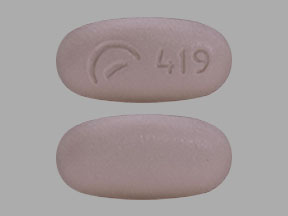
Ranolazine ER Coupons & Savings Card – Discount Prices from $12.03
Generic for: Ranexa, Aspruzyo sprinkle
My prescription
Edit
1000MG, Ranolazine ER (30 Tablet Extended Release 12 Hours)
Select pharmacy

CVS
$22.83
COUPON PRICE
Walmart
$12.03
COUPON PRICE
Walgreens
$17.85
COUPON PRICE
Albertsons
$23.01
COUPON PRICEFree Ranolazine ER Savings Card

Walmart
$12.03
Show this coupon to your pharmacist
ID
LH2A199BA9
PCN
CHIPPO
BIN
019876
GRP
LHX
This coupon is not insurance
More prescriptions for angina
More prescriptions for angina
Price history for Aspruzyo Sprinkle (brand) & Ranolazine ER (generic)
30 Tablet Extended Release 12 Hours, 1000MG
Average retail price for Aspruzyo Sprinkle
Average retail price for Ranolazine ER
Average SaveHealth price for Ranolazine ER
Our price history data is based on aggregated prescription data collected from participating pharmacies in America. Our prescription data updates daily to reflect the latest price changes. If you notice a missing data point, it means there wasn't sufficient data available to generate a monetary value for that date.
We analyzed Ranolazine ER prices for (1000MG, 30 Tablet Extended Release 12 Hours) over the last 12 months. The average retail price was $49.54, while the average price using the SaveHealth discount card was $23.97. That's a savings of approximately 51.61% when using our Ranolazine ER coupon.
Compared to the generic version, Aspruzyo Sprinkle had an average price of $296.45 over the same time period. With the SaveHealth savings card, Ranolazine ER is 91.91% cheaper on average than Aspruzyo Sprinkle.
*Retail prices are based on pharmacy claims data, and may not be accurate when we don't have enough claims.
Ranolazine ER dosage forms
Dosage Quantity Price from Per unit 500MG 30 Tablet Extended Release 12 Hours $10.44 $0.35 500MG 60 Tablet Extended Release 12 Hours $18.38 $0.31 500MG 90 Tablet Extended Release 12 Hours $24.39 $0.27 1000MG 30 Tablet Extended Release 12 Hours $12.03 $0.40 1000MG 60 Tablet Extended Release 12 Hours $21.57 $0.36 1000MG 90 Tablet Extended Release 12 Hours $31.10 $0.35
| Dosage | Quantity | Price from | Per unit |
|---|---|---|---|
| 500MG | 30 Tablet Extended Release 12 Hours | $10.44 | $0.35 |
| 500MG | 60 Tablet Extended Release 12 Hours | $18.38 | $0.31 |
| 500MG | 90 Tablet Extended Release 12 Hours | $24.39 | $0.27 |
| 1000MG | 30 Tablet Extended Release 12 Hours | $12.03 | $0.40 |
| 1000MG | 60 Tablet Extended Release 12 Hours | $21.57 | $0.36 |
| 1000MG | 90 Tablet Extended Release 12 Hours | $31.10 | $0.35 |
Ranolazine ER Warnings
When using ranolazine, it is important to be aware of potential interactions with other medications that could influence how the drug is metabolized and its effectiveness. Here are some key points to consider:
- Medications like azole antifungals (e.g., itraconazole, ketoconazole) may impact the breakdown of ranolazine.
- Antibiotics such as clarithromycin and drugs like cobicistat might alter how ranolazine functions in the body.
- Certain antidepressants, including nefazodone, can affect ranolazine's removal.
- HIV protease inhibitors, like nelfinavir and ritonavir, are known to interact with ranolazine.
- Rifamycins, such as rifabutin and rifampin, might interfere with the drug's metabolism.
- Seizure medications, including carbamazepine, phenobarbital, and phenytoin, may also have an impact.
- Herbal supplements like St. John's wort can influence the effectiveness of ranolazine.
Always consult your healthcare provider before starting or stopping any medication to ensure safe use of ranolazine.
Ranolazine ER Side Effects
Common side effects:
- Dizziness
- Headache
- Lightheadedness
- Nausea
- Tiredness
- Constipation
Less common but important to monitor:
- Changes in urine output
Serious side effects:
- Fainting
- Severe dizziness
- Fast or irregular heartbeat
- Rash
- Itching
- Swelling of face, tongue, or throat
- Difficulty breathing
